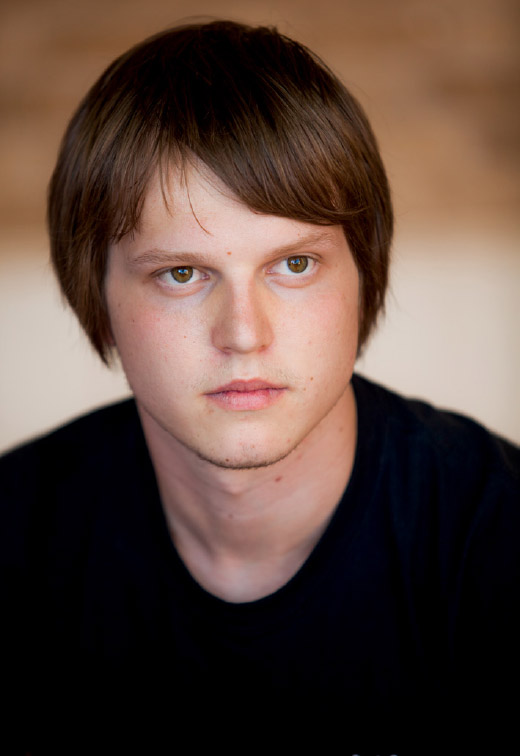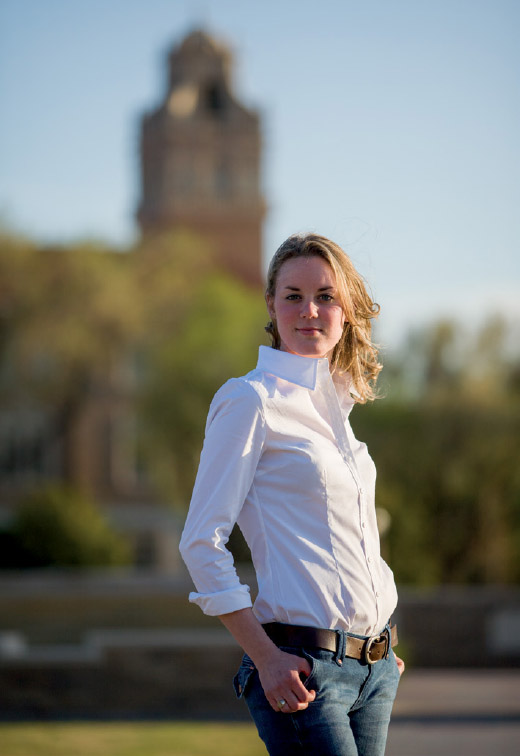26. PAY ATTENTION TO THE BACKGROUND
![]()
IF THERE’S ONE thing I see new photographers failing to consider, it’s the background. We get so wrapped up in focusing, setting depth of field, and finding correct exposure that we forget to actually see if the background is worthy of the portrait we just worked hard to devise. The background could be so bright that it draws the eye away from your subject. Or, it could be in focus just enough that the structure behind your subject distracts the viewer. A pole could be growing out of your subject’s head! Before you snap the photo, it’s worth giving more than a quick glance at the background.
The background does not have to say much, or anything at all, but it can break an image. Although there are no official rules regarding the background, there are a few things I like to keep in mind when it comes to the area beyond your subject in certain types of portrait photography.
For tighter portraits, such as headshots, find a background that lacks linear structures (such as tree limbs, fence stakes, and the like). Also, choose one that will go out of focus when using a shallow depth of field, and essentially becomes an abstract environment that won’t distract from the subject (Figure 26.1). I especially do not want the background in these types of shots to overexpose, unless it is stylistically necessary. I tend to find subdued lighting for this type of portraiture, therefore reducing the risk of a brighter background.
For family and general portraiture—much of which is shot from just above the knee or tighter—I tend to follow the same guidelines. Again, this is the type of portraiture that relies heavily upon shallow depth of field and backgrounds that don’t distract too much. However, the background is an important part of the portrait subject’s narrative. For example, a college senior might be photographed leaning against recognizable campus architecture (Figure 26.2). When the background is a more essential part of the portrait, it might be a great idea to introduce a bit more compositional appeal to it. Out of focus layers, for example, work well; as do backgrounds of backlit foliage and colorful flowers (Figure 26.3). When it comes to out of focus backgrounds, explore the many possibilities. The idea is to use a background that isn’t too busy and distracting.
The background is an even more essential part of many editorial style portraits, such as environmental portraits. In this case, the background is the environment and an important element in communicating a story or message about the portrait subject (Figure 26.4). These portraits are often made at wider focal lengths or with more depth of field, bringing the background (and foreground) more into focus. For these instances, I suggest placing your subject (especially his head) in the part of the background that is void of structure. Environmental portraits can certainly be made at shallow depths of field, but since the background always plays a larger part in the shot, compose it so that your subject stands out. If you are concerned that the background may be a bit distracting, it’s a good idea to use your camera’s Depth of Field Preview button to get a quick look at how in-focus the background becomes after placing your focus on the subject.
Ultimately, paying attention to the background is all about either reducing its potential for distraction or ensuring that it complements the narrative of your subject without becoming an eye-sore or attention hog. Remember, the next time you are making any type of portrait, look beyond the subject.
26.1 The background in this headshot is completely abstract and undistracting thanks to extremely shallow depth of field and muted, properly exposed light values and color tones.
ISO 400; 1/160 sec.; f/2.8; 180mm
26.2 Although out of focus, the still-recognizable iconic Texas Tech University bell tower serves as a nice background for this graduating senior’s portrait.
ISO 100; 1/1600 sec.; f/2.8; 160mm
26.3 The layers in the background, although out of focus, serve as a nice, abstract pattern for the eye. They also provide a nice bit of academic context for the portrait.
ISO 200; 1/200 sec.; f/4.5; 160mm
26.4 I made several images of this coffee shop owner before the employee moved into the background behind the counter. Her presence provides a nice narrative element for the entrepreneur’s environmental portrait.
ISO 200; 1/1250 sec.; f/1.8; 50mm




